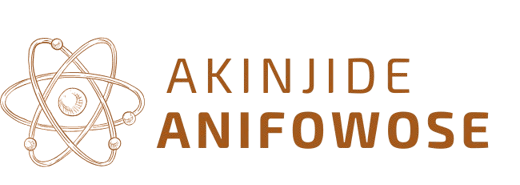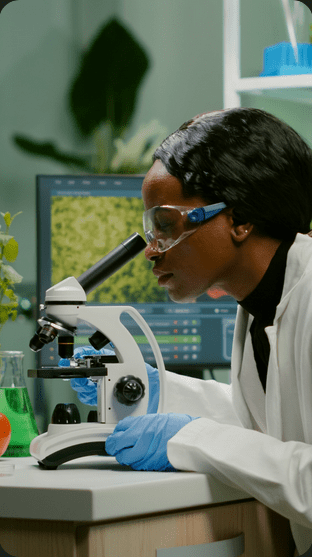Postgraduate Research Scientist (Emma Briggs Lab), Newcastle University, UK
September 1, 2025Bench Work, Inqaba Biotech – Africa’s Genomic Company
December 20, 2024
Research Objectives
The primary aim of this research is to apply computational techniques to improve understanding and management of diseases through:
-
Development of computational tools for pediatric cancer drug discovery.
-
Application of functional enrichment analysis and visualization using R and Shiny.
-
Multi-omics data integration for infectious disease surveillance and genomic epidemiology.
-
Classification of cancer subtypes using machine learning models.
-
Comprehensive analysis of whole genome sequencing (WGS) data from pathogenic bacteria.
1. Drug Discovery in Pediatric Leukemia
-
Designed and implemented a computational pipeline to identify potential therapeutic targets in pediatric leukemia.
-
Integrated multi-omics datasets to explore gene–drug interactions.
-
Used R programming and TCGA datasets to perform data cleaning, normalization, and biomarker identification.
2. Functional Enrichment Analysis and Visualization
-
Developed an interactive R Shiny application that utilizes the
TCGAanalyze_EAcomplete() and TCGA_EAbarplot() functions from the TCGAbiolinks package.
-
The app reproduces and extends the functionality of a similar tool originally developed by South Dakota University, enabling users to visualize biological pathway enrichment across multiple cancer datasets.
3. Infectious Disease Genomics
-
Conducted malaria prevalence studies using computational methods in R to compare two diagnostic detection techniques.
-
Analyzed whole genome sequencing (WGS) data from over 100 bacterial isolates collected during the 2017–2018 South African outbreak.
-
Employed bash scripting and Python for downstream data processing, variant calling, and genome annotation.
4. Machine Learning & Methylation Data Analysis
-
Built machine learning models in R to classify cancer subtypes based on DNA methylation profiles.
-
Applied clustering and dimensionality reduction techniques (PCA, t-SNE) for data visualization and feature selection.
5. Transcriptomics Analysis
-
Conducted RNA-Seq data analysis in R to identify differentially expressed genes and gene co-expression patterns.
-
Performed functional annotation and gene ontology analysis to reveal molecular pathways linked to disease progression.
2. Functional Enrichment Analysis and Visualization
-
Developed an interactive R Shiny application that utilizes the
TCGAanalyze_EAcomplete() and TCGA_EAbarplot() functions from the TCGAbiolinks package.
-
The app reproduces and extends the functionality of a similar tool originally developed by South Dakota University, enabling users to visualize biological pathway enrichment across multiple cancer datasets.
4. Machine Learning & Methylation Data Analysis
-
Built machine learning models in R to classify cancer subtypes based on DNA methylation profiles.
-
Applied clustering and dimensionality reduction techniques (PCA, t-SNE) for data visualization and feature selection.
Key Outcomes
-
Built a custom interactive R Shiny tool for functional enrichment analysis, improving accessibility of cancer-related data visualization.
-
Designed reproducible bioinformatics pipelines for analyzing large-scale genomic datasets.
-
Applied machine learning algorithms to successfully classify cancer subtypes using methylation signatures.
-
Strengthened computational frameworks for integrating multi-omics data in both infectious and non-infectious disease research
Research Significance
This research bridges computational modeling and biomedical research to create scalable, data-driven solutions for health science.
The integration of bioinformatics, machine learning, and multi-omics analysis enhances understanding of:
-
Molecular signatures driving disease heterogeneity.
-
Drug target prediction and therapeutic optimization.
-
Epidemiological tracking and genomic surveillance of pathogens.
The outcomes contribute to the global shift toward precision medicine and computational health informatics, offering reproducible workflows that can be adapted for diverse biomedical research contexts.
Key Outcomes
-
Built a custom interactive R Shiny tool for functional enrichment analysis, improving accessibility of cancer-related data visualization.
-
Designed reproducible bioinformatics pipelines for analyzing large-scale genomic datasets.
-
Applied machine learning algorithms to successfully classify cancer subtypes using methylation signatures.
-
Strengthened computational frameworks for integrating multi-omics data in both infectious and non-infectious disease research
Research Significance
This research bridges computational modeling and biomedical research to create scalable, data-driven solutions for health science.
The integration of bioinformatics, machine learning, and multi-omics analysis enhances understanding of:
-
Molecular signatures driving disease heterogeneity.
-
Drug target prediction and therapeutic optimization.
-
Epidemiological tracking and genomic surveillance of pathogens.
The outcomes contribute to the global shift toward precision medicine and computational health informatics, offering reproducible workflows that can be adapted for diverse biomedical research contexts.
Tools and Technologies
-
Programming Languages: R, Python, Bash
-
Bioinformatics Frameworks: TCGAbiolinks, DESeq2, edgeR, Galaxy, Bioconductor
-
Machine Learning: Caret, RandomForest, xgboost, sklearn
-
Visualization: ggplot2, R Shiny, matplotlib, seaborn
-
Data Types: WGS, Transcriptomics (RNA-seq), Methylation dat
Tools and Technologies

-
Programming Languages: R, Python, Bash
-
Bioinformatics Frameworks: TCGAbiolinks, DESeq2, edgeR, Galaxy, Bioconductor
-
Machine Learning: Caret, RandomForest, xgboost, sklearn
-
Visualization: ggplot2, R Shiny, matplotlib, seaborn
-
Data Types: WGS, Transcriptomics (RNA-seq), Methylation dat








